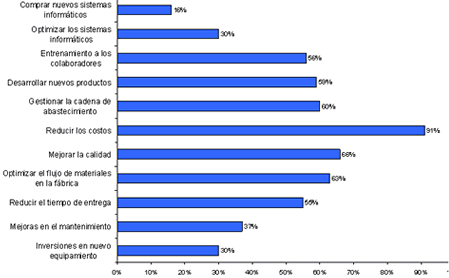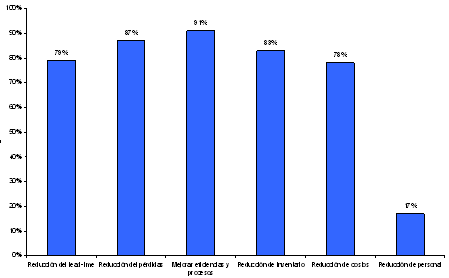Truth be told: it sounds like an easy concept to understand. Everyone knows it: if you're "world class," it's because you're among the best in the world at what you do.
Unfortunately, there is no universally accepted dictionary definition, so everyone has their own interpretation.
Manufacturing is a competitive business, but it's not a sport where the winner gets a trophy or a medal. So how do we measure world class? Is it the company that sells the most? The one that sells the best? The one that does it the fastest? Is it a combination of all of them?
Some data
Before moving on to the topic, a little background is in order. The surveyed entrepreneurs responded to two questions as follows:
1 – Which of these factors are a key priority for your business today?

2 – Which of the following benefits can you associate with the implementation of industrial management systems (TPM, LEAN, 5”S”)

And then?
Rather than attempting a definition, we can say that World Class Manufacturing involves consistently focusing on 7 critical attributes:
- The essential customer satisfaction in 3 specific areas:
- Responsiveness
- Reliability
- Quality in everything
- Motivating and treating employees as valued assets (something everyone says but few do...)
- Constant innovation in the products and services provided.
- Permanent synchronization along the value chain.
- A culture of continuous improvement:
- Doing more with less
- Eliminating losses
- Reducing lead-time
- The strategic ability to constantly adapt (it's not a question of becoming rigid in the new paradigm...)
- The overall growth of the company.
If these seven attributes are achieved, not in one semester, but consistently over the years, then we are in a position to talk about World-Class Manufacturing.
Generally speaking, we can say that a company can be considered World Class if the EGE (Overall Equipment Effectiveness, or OEE) of the team that represents your system's restriction or bottleneck is greater than 85% (of course, provided it is calculated correctly).
A quick visit to a good portion of Argentine companies shows that they have enormous untapped capacity hidden behind their losses. Losses that the correct calculation of the EGE helps make visible.
In our environment, 80% companies claim to be working toward continuous improvement. The difference lies in the mental model: of that 80%, the 60% believes that one small step is enough. Only the 20% understands that each step is only the first of many to be taken.
In short, we can say that it is a never-ending journey: we will never reach that end because there is always, ALWAYS, something to improve.
We'll follow soon
